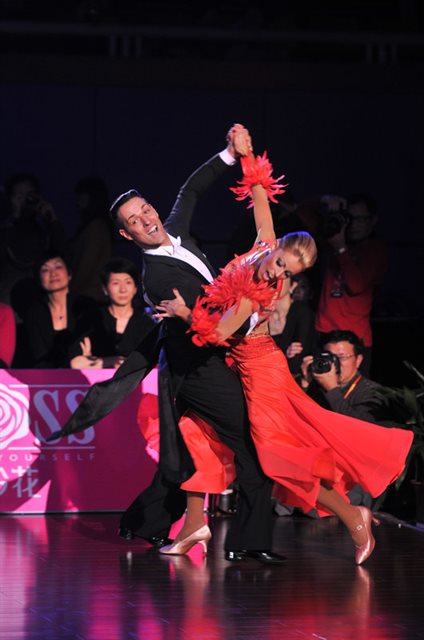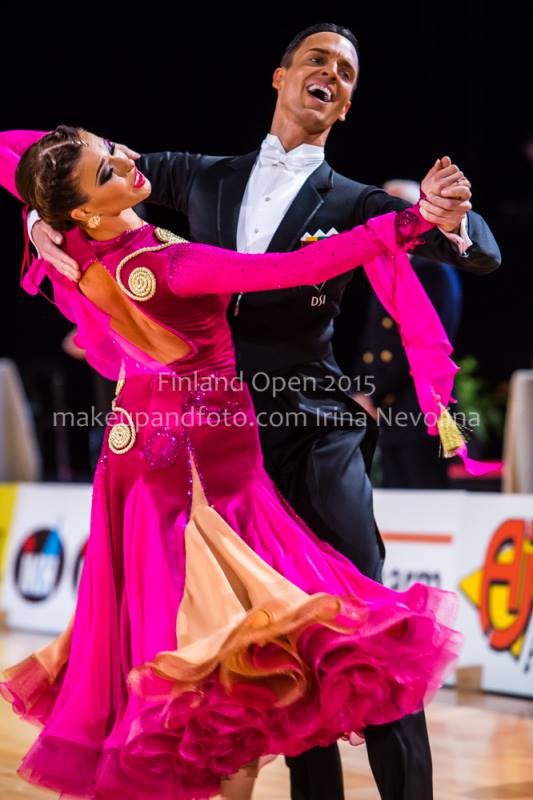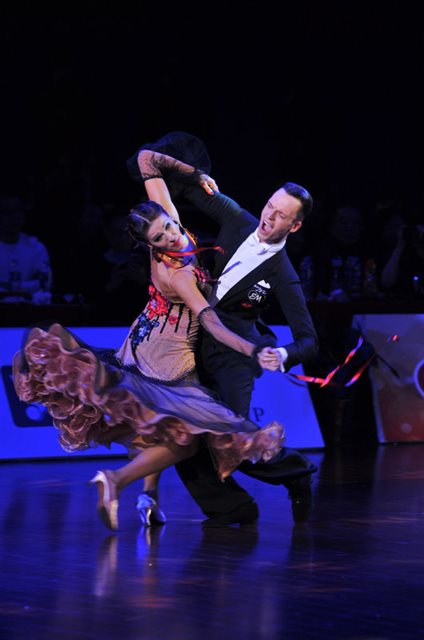International Style Standard
See also: Categories: Dances, History, DanceSport, Ballroom
Definition
Introduction
The WDC incorporates various groupings and former titles, such as the World Dance and DanceSport Council (former title). The WDC is the governing body for international professional and amateur DanceSport. The World DanceSport Federation is, to some extent, a rival body which issues rules for amateur competitions. The list is supplemented by nine American style dances—four American Smooth and five American Rhythm—which are defined by United States dance organizations, such as USA Dance, (formerly USABDA, the United States Amateur Ballroom Dancers Association).Besides determining which dances are performed, these organizations specify many other aspects of their competitions, for instance, the tempo of music allowed and the duration of each competition round.
WDC International style dances
Within World Dance Council international competitions are two categories of dances, Ballroom (also called Standard or Modern) and Latin. In England (e.g. at the Blackpool Dance Festival), the categories are traditionally called Ballroom and Latin American dances respectively. In the Ballroom dance, men typically wear evening dress (coattails, waistcoats and white bow ties), while women wear gowns. Partners remain in closed position throughout the dance, and movements tend to be elegant and sweeping. The ballroom dance are progressive, moving anti-clockwise round the floor.
The Latin dances are more overtly sensual, with skimpy costumes for women and tight-fitting ones for men. More variation in movement is allowed than in the Standard dances. Close, semi-open and open figures are danced. Choreography is now extremely important. Hip action is common; and athletic and balletic maneuvers are common. Two Latin dances are progressive (samba and paso doble), but there is no obligation to move in any pre-set manner round the floor.
Standard
Latin
American style
The American Smooth and American Rhythm categories of American style DanceSport roughly correspond to the international style Standard and international style Latin categories. In Smooth, dancers wear costumes not greatly dissimilar to those worn by their counterparts in Standard. Standard dresses often have prominent floats embellishing the arms and fuller skirts which are typically absent in Smooth, due to the open movement and changing arm positions requiring less restriction on the body; however, the dances themselves are significantly different as a result of influence by dancers like Fred Astaire and Arthur Murray in the years following World War II. While elegance and flow remain the goal, as in International Standard, dancers do not remain in closed position exclusively, instead breaking away from each other periodically and experimenting with open footwork. The Rhythm dances were also influenced by American dancers of the post-WWII era, but the differences between it and International style Latin are more subtle. Costumes are similar, and while step patterns are not identical, movements are as free and explicitly sensual as in Latin.
Smooth
Rhythm






